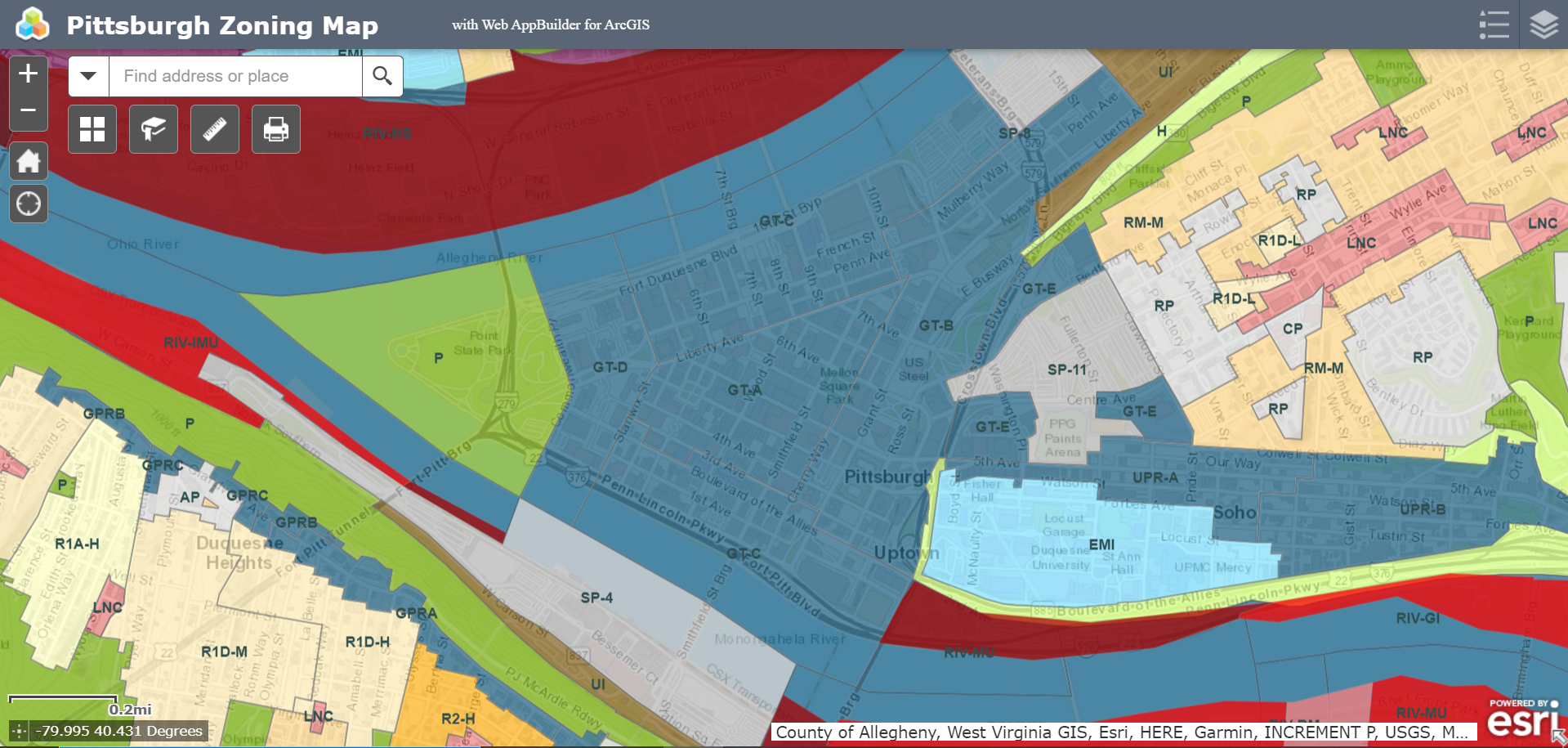Pittsburgh Zoning Districts - GT-A Overview
By Kathleen Oldrey
Introduction
Zoning districts are a fundamental building block of zoning regulations and set the base use, height, and density standards for the area they cover. In some cases, the district also sets the required level of zoning review. Pittsburgh has over 50 distinct mapped zoning districts. This series of guides is unpacking each of these districts.
In this post, we provide an overview of the GT-A (Golden Triangle Subdistrict A) zoning district. Additional posts dive into the density regulations for the GT-A and the use regulations for the GT, as well as provide an overview of the full GT and the other subdistricts: GT-B, GT-C, GT-D, and GT-E.
Refer to our Introduction to Pittsburgh’s Zoning Districts for the complete list of base zoning districts in the city. Pittsburgh’s interactive zoning map can be used to verify the project site’s zoning district.
Overview
The GT-A (Golden Triangle Subdistrict A) zoning district covers 0.1 square miles or 0.21% of Pittsburgh and is roughly bounded by Liberty Avenue, William Penn Place, Cherry Way, Third Avenue, and Stanwix Street. It borders areas zoned GT-C, GT-B, and GT-D.
Challenges
The GT-A subdistrict is subject to all regulations that apply to the Golden Triangle as a whole, including Project Development Plan review standards and open space requirements. The subdistrict’s purpose statement identifies the GT-A as the core of downtown; first-floor restaurant and retail uses are required in spaces with street access.
The GT-A subdistrict is wholly located within a Registered Community Organization area for the Pittsburgh Downtown Partnership. Under the Project Development Plan standards, proposed projects that include the development of new residential units or exterior renovations costing more than $50,000 require review by Planning Commission; in an RCO area, review by Planning Commission must be preceded by a Development Activities Meeting with the RCO. Part of the subdistrict is also within the Market Square historic district; applications within that area may be required to undergo historic review. All of the GT-A subdistrict is located within the downtown Parking Reduction zone.
Conclusion
The GT-A subdistrict is impacted by multiple code provisions and overlay areas that could require additional public processes and review steps. While there are no environmental overlays that impact the GT-A subdistrict, allocating time and costs for the public process requirements should be anticipated.

